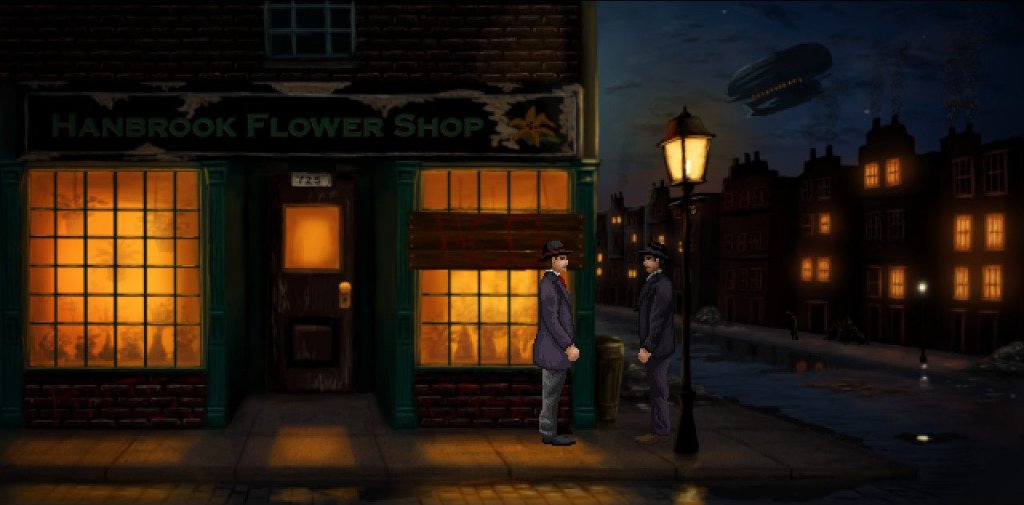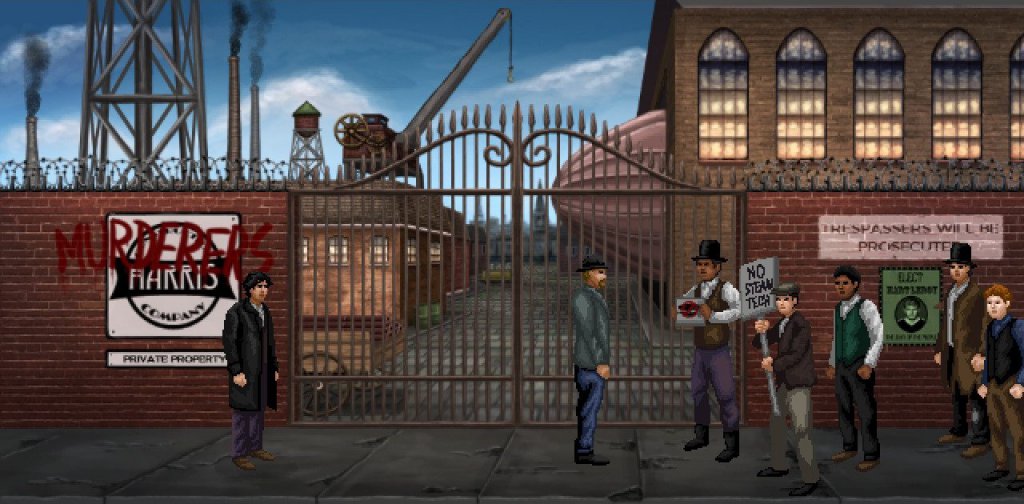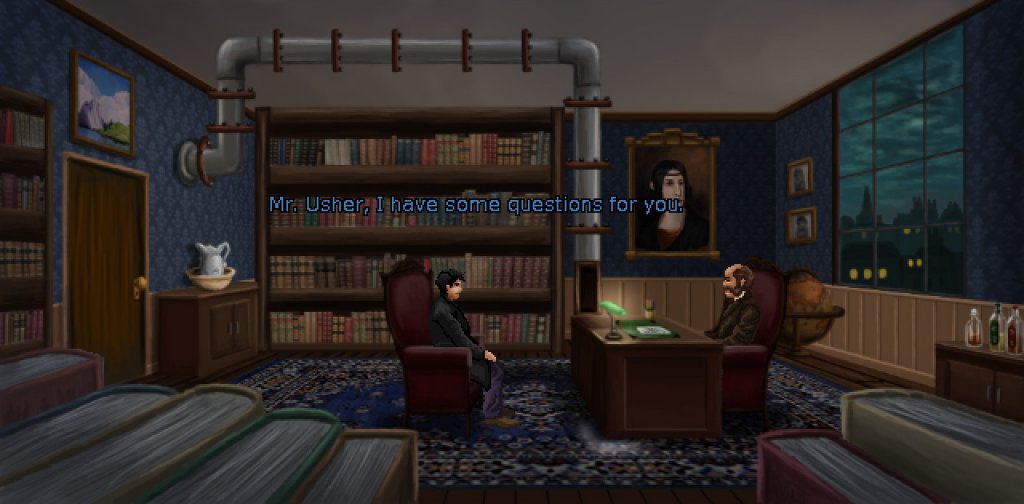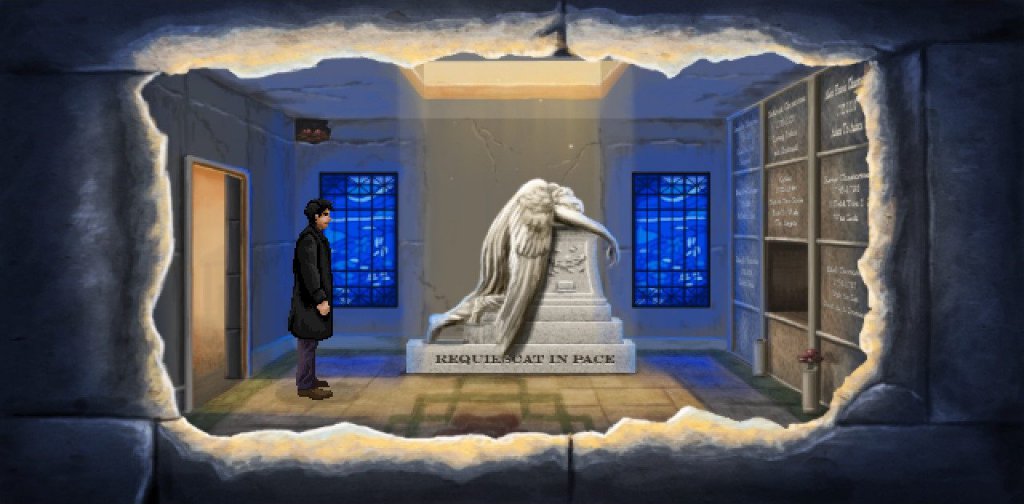The smog is dense in Lamplight City
Lamplight City brings detective fiction into a 19th century steampunk universe.
The adventure genre is an odd one. Among its newer entries, some resemble adventures of old so much that they could have been released decades ago, pixel hunting and contrived puzzles included. Others go into the opposite direct and adapt the interactive experience formula, ditching gameplay for the most part. Lamplight City, developed by Grundislav Games and published by Application Systems Heidelberg, takes the middle road.
Lamplight City is set in a steampunk version of America of the 1840s. You take the role of Miles Fordham, a private eye whose partner Bill was recently killed. Bill is not gone, however, as his voice haunts Miles throughout the entirety of the game.
Graphically, Lamplight City looks a bit like a late-era 2D adventure game, albeit with a higher resolution and smoother animations than those of Gabriel Knight: Sins of the Fathers. The steampunk setting is not particularly fresh, but is surprisingly well-implemented: various devices are often seen in the background together with their inventors and operators, making the integration of the setting feel seamless.
With regard to gameplay, Lamplight City does not quite follow the formula of traditional adventure games. There is no inventory, and while Miles can interact with the occasional object, he does so automatically. You will never have to combine the fish bone with the corkscrew to open a door.
Instead, Lamplight City relies on its dialogue system for you to solve the five cases it has to offer. However, those who like to exhaust dialogue options and brute-force their way out of dead ends should be careful — Lamplight City allows you to botch up permanently.
That said, this is not a flashback to poorly designed 80s adventure games which would allow you to miss critical items or kill important characters and still not tell you five hours later while you are permanently stuck. Instead, a blunder means that you will most likely accuse the wrong suspect and not properly solve the case.
This would be a little more interesting if Lamplight City telegraphed this better during the earlier cases. However, it does not, and sometimes it is not even clear that you just pointed your digital finger the wrong guy or made a mistake during a conversation. Thankfully, later cases do a better job.
While the dead-end mechanic sounds intimidating, it is ultimately not that easy to mess things up entirely in Lamplight City. Those who tread lightly and do not impatiently insult NPCs will mostly likely succeed — and even if you fail to do so, you will still progress to the end of the case.
On the way, the likeable Miles and the setting will keep you entertained — even if Miles is a bit cliché, being a former detective (because of course he is) who drinks too much (because of course he does). Additionally, Lamplight City’s fairly decent soundtrack and voice acting accompany you.
Other nice touches include elements of social unrest that are mentioned in the later chapters, showing that despite all its technological marvels, the world of Lamplight City is not exactly a utopia. Racism and a gap between working class and aristocracy very much exist, and are presented as the negatives they are.
A bit lacking is the presentation of some of the stories that Lamplight City tells. All the NPCs have a fair amount of interesting stuff to say, but some of these stories would have better been shown— instead we get even more text. Likewise, Miles occasionally spouts out conclusions that should have been reached by the player, cutting the actual detective work a bit short.
Lamplight City mixes old and new, and while it does not succeed in every way, it does deliver a satisfying experience and good pacing via its division into various cases and a well-executed steampunk backdrop. Unless yet another game with retro-style graphics is too much for you, give it a go.
Lamplight City is now available for PC and Mac OS.




Comments are closed.